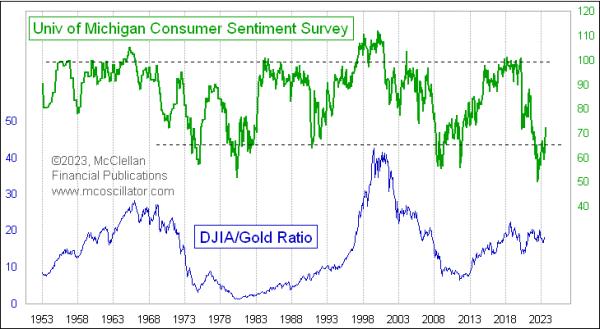“I have no notion that the Palestinians are telling the truth about how many people are killed. I’m sure innocents have been killed, and it’s the price of waging a war. … I have no confidence in the number that the Palestinians are using.”
— President Biden, remarks at the White House, Oct. 25
The Hamas attack on Israel on Oct. 7 killed at least 1,400 civilians and soldiers, according to an Associated Press count. Israel’s response — a bombing campaign and now a major ground assault — had killed 8,309 as of Sunday, according to a count by the Gaza Health Ministry, which is controlled by Hamas, a militant group designated a terrorist organization by the U.S. State Department.
In any war, statistics on deaths are fuzzy and subject to change. Almost a month after the Hamas attack, the precise number of dead from that attack is unclear, as 200 bodies remain unidentified. As of Tuesday, Israel’s Haaretz newspaper had published the names of 1,009 verified dead (657 civilians and the rest are soldiers, police and rescue services), with names being added daily.
The daily death count released by the Gaza Health Ministry has helped stir protests around the world, as the total has quickly exceeded the number of dead suffered by Israel. The Israel Defense Forces said it launched more than 7,000 airstrikes into the Gaza Strip, an oceanfront area that’s only twice the size of D.C. with more than 2 million people.
At an Oct. 25 White House news conference, a reporter began a question to Biden by noting that “the Hamas-controlled Gaza Health Ministry says Israeli forces have killed over 6,000 Palestinians, including 2,700 children.”
Biden’s dismissal of the ministry’s statistics — that he had “no confidence” in them — was striking. The State Department has regularly cited ministry statistics without caveats in its annual human rights reports. The U.N. Office for the Coordination of Humanitarian Affairs (OCHA), which tracks deaths in the conflict, has found the ministry’s numbers to be reliable after conducting its own investigation. “Past experience indicated that tolls were reported with high accuracy,” an OCHA official told The Fact Checker.
Medhat Abbas, the Gaza Health Ministry’s director general, said in an interview that he was so disturbed by Biden’s comment that he ordered his staff to release a 212-page document with the name of every victim identified so far — including age, sex and identity number. The list included almost 7,000 names.
With any numbers, there are caveats. Questions have also been raised about the ministry’s statistics after a still-murky incident at the al-Ahli Hospital was said to have killed nearly 500 people. So let’s explore whether Biden’s opinion of the statistics has a factual basis.
Abbas said the ministry primarily relies on death certificates from hospitals and morgues in compiling its daily counts of the number of dead in the conflict, which is then collected in a computerized system. In the document released after Biden’s comment, which was through Oct. 25, the deadliest day was Oct. 24, when 756 people were reported killed, followed by Oct. 23, when 704 were reported killed, and Oct. 17, when 678 were reported killed. The hospital incident took place Oct. 17.
And for each day, more children than adults were listed as killed. On virtually all days — with the notable exception of Oct. 17, the day of the hospital incident — more males than females were reported as killed.
In its death counts, the ministry makes no distinction between the deaths of civilians and combatants. Neither does it list whether a person was killed because a Palestinian rocket aimed at Israel fell short of its target and crashed into a populated area of Gaza. The ministry only lists aggregate totals.
OCHA, when it does its own post-conflict reports, seeks to determine the percentage of combatants. After a 2012 clash, for instance, OCHA determined there were 2,133 deaths in Gaza, of which 644, or 30 percent, were combatants.
In 2014, the New York Times analyzed 1,431 names listed by the ministry as being killed in a war with Israel that year. The newspaper found that the population most likely to be militants, men ages 20 to 29, was the most overrepresented in the death toll. That population represented 9 percent of Gaza’s residents but 34 percent of those killed.
The Meir Amit Intelligence and Terrorism Information Center, an Israeli organization, released a detailed report on the first 152 names on the 2014 list and said it concluded that 47 percent were militants. Yossi Kuperwasser, a retired brigadier general affiliated with the center, said the center has no plans to analyze the names released in the current conflict, due to a lack of resources.
Whatever the percentage of combatants, there was little disagreement about the number of Palestinians killed in the 2014 war. The Gaza Health Ministry said 2,310, OCHA said 2,251, and Israel’s foreign ministry said 2,125.
Around 7 p.m. local time on Oct. 17, an explosion occurred at al-Ahli Hospital. About an hour and a half later, the Gaza Health Ministry reported on its Facebook page that Israel had targeted the hospital. The source of the explosion remains unclear. A Washington Post visual investigation found that the damage was not consistent with an airstrike and probably not consistent with an artillery shell, but reporters could not conclusively determine the cause. Israel has denied responsibility and blamed an errant Palestinian rocket.
An hour later, the ministry said most of the dead were women and children. Subsequent posts referred to a “massacre,” but it was not until the next day, about 23 hours after the explosion, that the ministry posted an official count of 471 dead.
But almost immediately after the attack — about two hours — news organizations began to report that a ministry spokesman had said 500 people were killed. The speed of the estimate called into question its accuracy.
Yet the very first reports in Arabic that were attributed to a health ministry spokesman referred to 500 “victims,” using an Arabic word suggesting casualties, which could include those injured. Confusingly, another post referred to “500 victims falling,” which could mean dead. At almost the same time, Al Jazeera quoted a Gaza civil defense spokesman as saying 300 people were killed, also suggesting the death toll was not as high as 500.
But at about the same time, an unnamed ministry spokesman was quoted by both Al Jazeera and Reuters in English as saying 500 people were killed. The Palestinian Ministry of Foreign Affairs, based in Ramallah in the West Bank and not associated with Hamas, appeared to make it official with its own post: “Israeli warplanes bombed Al-Ahli Arab hospital (Baptist Hospital) in the center of Gaza City, resulting in the martyrdom of 500 Palestinians, including children and women.”
The news reports sparked demonstrations across the Arab world and other countries. But when dawn broke and clear images of the explosion site were visible, the damage appeared less extensive than imagined. U.S. intelligence sources claimed that the death toll was “probably at the low end of the 100-to-300 spectrum.”
Abbas, the ministry director, said he saw many estimates the night of Oct. 17, including one that said 800 dead and another one claiming as many as 1,300 dead. “At the end of the day, the death certificates totaled 471,” he said — a number that happened to closely track the initial reports.
Omar Shakir, the Israel and Palestine director at Human Rights Watch, said that in his experience, the ministry’s numbers are “generally reliable.” But he made a distinction between estimates given in the heat of the moment and the official count that the ministry releases at the end of the day. “The statements must be distinguished from the aggregate death toll,” he said.
An Israeli strike Tuesday on Gaza’s Jabalya refugee camp killed or wounded 400, the ministry said, a more cautious statement than after the hospital incident.
The White House did not provide an on-the-record comment. When asking about Biden’s comment, State Department spokesman Matthew Miller last week said, “We don’t have any way to make an accurate assessment of our own about the number of civilians who have died in Gaza. There is not an independent body that’s operating in Gaza that can provide an accurate number. But we do have skepticism about everything that Hamas says.”
The president appeared to show excessive skepticism when he commented that he had “no confidence” in the health ministry’s figures and that he “had no notion that the Palestinians are telling the truth” about the death toll. The Gaza Health Ministry has had a pretty good track record with its death estimates over the years, notwithstanding that it is part of the Hamas-run government, and Biden is in a position to know that.
The initial reports on the hospital strike attributed to the ministry do give pause, however. Two hours is too soon to count 500 casualties, even if not all are dead — and one could be skeptical about the fact that the final count came so close to the initial estimate. But Biden was not asked about the hospital strike; he was asked about the aggregate number, which then stood at 6,000. A week later, the reported figure had risen by 2,000. With the numbers so large, whether a particular incident killed 300 people or 500 people seems less relevant.
The president could have noted that, based on previous Israel-Hamas wars, about one-third of deaths were likely to be combatants. But he swept away all the numbers as not credible. That’s his opinion — but it’s remarkably uninformed by history and precedent.
(About our rating scale)
Send us facts to check by filling out this form
Sign up for The Fact Checker weekly newsletter
The Fact Checker is a verified signatory to the International Fact-Checking Network code of principles





























